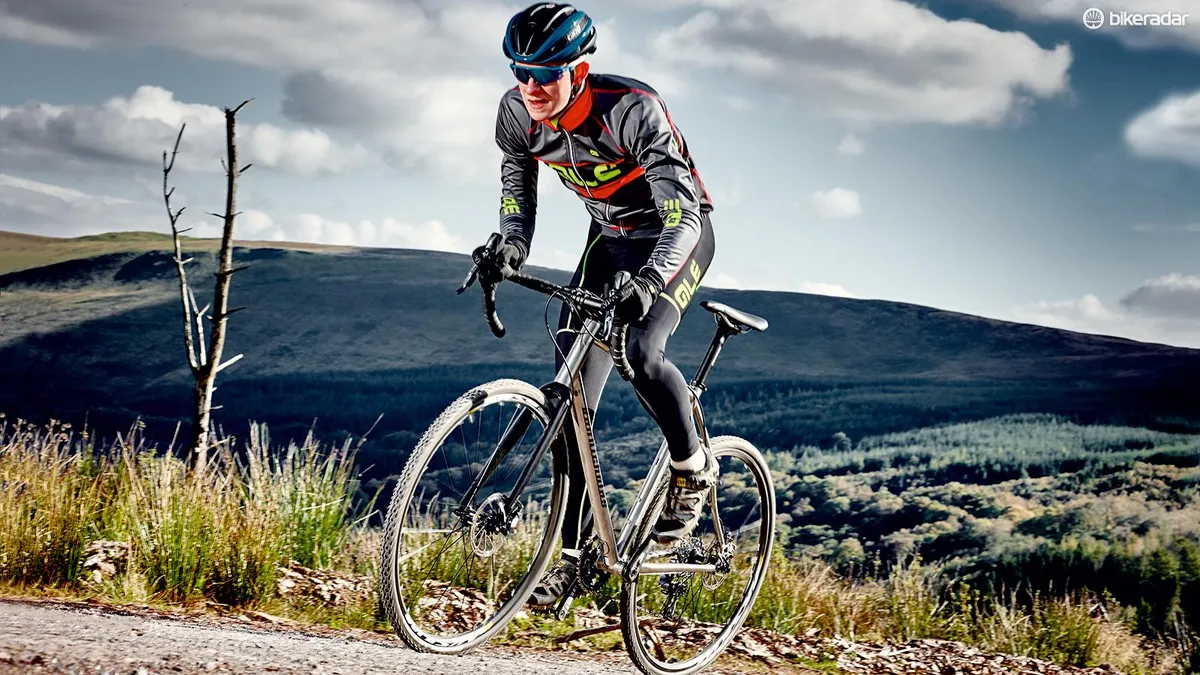In January a lot of us set ourselves goals or resolutions to change or improve our wellbeing. But as we move closer to spring have you already broken promises to yourself or are you in need of some fresh inspiration?
If you'd planned to get faster in 2017 here are a few things that could help towards achieving that goal at least.
1. Unnecessary expenditure
Cut costs so you can reward yourself with a better bike. “Keep on top of little repairs and you’ll save yourself a big outlay,” says Richard Salisbury, director of bike fit specialist, Pedal Precision.
“Clean and lube the key parts of your bike on a regular basis and check bolts, cables and housing to avoid a trip to the mechanics,” says Salisbury. “Keep your chain, cassette and chainrings clean to avoid creating a grinding paste of road filth that will see you buying replacements sooner.”
Neil Holman, mechanic at 247cycleshop.com, says: “If you get a deep cut in an expensive tyre use superglue to glue it back together. Cut up an old tyre and zip tie it to your chainstay to use as a chainstay protector (especially on mountain bikes) and cut the bead off an old road tyre and fit it inside another tyre to make a puncture-proof set up.”
To save more turn every pair of shorts you own into warmer ‘tights’ by investing in some decent leg warmers, rather than having to buy bib tights.
If you do want to invest in a new bike, hold out until March or October for a ‘nearly new’ one, as that’s when new models are released.
2. Glutton
“Switching to wheat-free pasta is a simple move that can reduce potential problems associated with wheat intake; bloating, allergies, aching joints and difficulty losing weight, ” suggests nutritionist Matt Lovell.
A University of Colorado study among 300 endurance cyclists found that when they reverted to wheat foods containing gluten, 84 percent claimed it negatively affected their training.
“Try having oats at breakfast in place of wheat-based cereal, use rice cakes as a snack instead of sandwiches and fruit instead of biscuits, ” suggests Lovell.
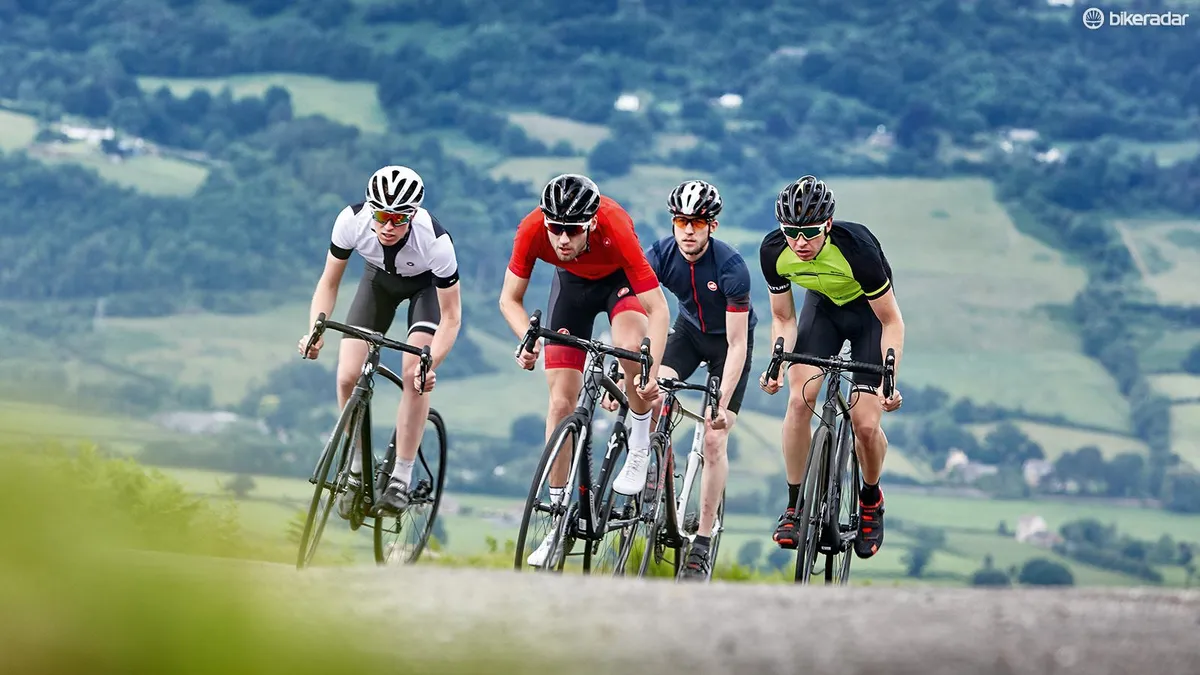
3. Alcohol
If you’re looking to get lean, restricting your alcohol intake could get you there faster.
Set up the turbo or put your bike on rollers then book a session in front of the TV
One US study found that drinking just 24g of alcohol — less than two pints — reduced the body’s fat-burning ability by 73 percent. Even when it’s swilling around in your system alcohol skews the water balance in your muscle cells and hinders gluconeogenesis — the formation of energy-giving sugar glucose — and relieves you of the energy you need for endurance.
Jonathan Edgeley, addiction consultant at soberservices.co.uk, has ideas for cyclists who like a tipple:
- Make a safe house: Remove all the booze in the house and keep it that way. This will encourage you not to have a quick drink and lose your challenge. You can decide how best to ‘remove’ any you have.
- Get a non-drinking buddy: Challenge a pal to a non-drinking contest and allow yourselves to hold one another accountable — check in with them on a daily basis to stay on track.
- Replacement therapy: Replace your drinking activities with something else. (Cycling instead of bottle recycling comes to mind). Have non-alcoholic drinks when you’d usually have a wine or beer or add an enjoyable food into your diet to feed your pleasure sensors.
- Break routine: Create an alternative structure to your day and plan your free evenings and weekends differently. If you always reach for a beer when you get home or the football comes on switch to a more constructive habit — taking a shower or having fruit drinks instead.
- Take steps: Break the month down into manageable sizes so you can make a commitment not to drink for one week, day or even just an hour at a time, and repeat this whenever you’re tempted. Treat it similar to a training plan, though this is more of an abstaining one.
4. Sofa time
Set up the turbo or put your bike on rollers then book a session in front of the TV. Pedalling through a full 60-minute programme at a steady speed – but breaking into a sprint at intervals – could torch around 300-400 calories.
Alternatively, follow a more prescribed approach from personal trainer, and former Olympian, Toby Garbett. “If you’re using rollers or a turbo instead of the sofa when watching TV then do 4x10-second max cadence efforts spread over four minutes to liven the legs up. Then switch from steady rides at 60 percent of your maximum heart rate (MHR) up to higher resistance, or a harder gear, working at 80-100 percent of your MHR for shorter sections.”
Overall, swapping the sofa for the saddle at home will give your fitness levels and vertebrae a boost, and may even make you feel better.
5. Weight (and keep it off)
Step on the scales and make a note of where you are. Take a ‘before’ selfie then follow these golden rules before posting it with your resultant amazing ‘after’ pic.
- Cut carbs, add protein: “A consistent theme in any successful fat loss plan is having a high percentage of calories from protein,” says Matt Lovell. “It keeps you full, which means you are less likely to eat the wrong things, it protects your muscle mass, which is essential whenever you drop calories to lose fat, and it supports wellbeing as the protein is used for hormones, neurotransmitters and your immune system function.”
- Make a cereal killing: “Sugar-filled cereals crush energy levels and sabotage metabolism,” says Lovell. Instead make your first meal of the day yoghurt with berries, porridge or peanut butter on wholegrain bread. A study in the American Journal of Clinical Nutrition found that people who ate a high-protein breakfast consumed fewer snacks throughout the day.
- Cut it up: There have been studies — like one by Arizona University where researchers watched the eating habits of 300 students — that show how those who cut up their food into smaller portions and chew each mouthful eat up to 30 percent fewer calories throughout the day.
- Table talk: Put down the tablet, turn off the TV, sit at the table, serve 8oz glasses of water with every meal and remove serving dishes from the table before you start eating – those who do have been shown to cut calorie consumption by around 30 per cent.
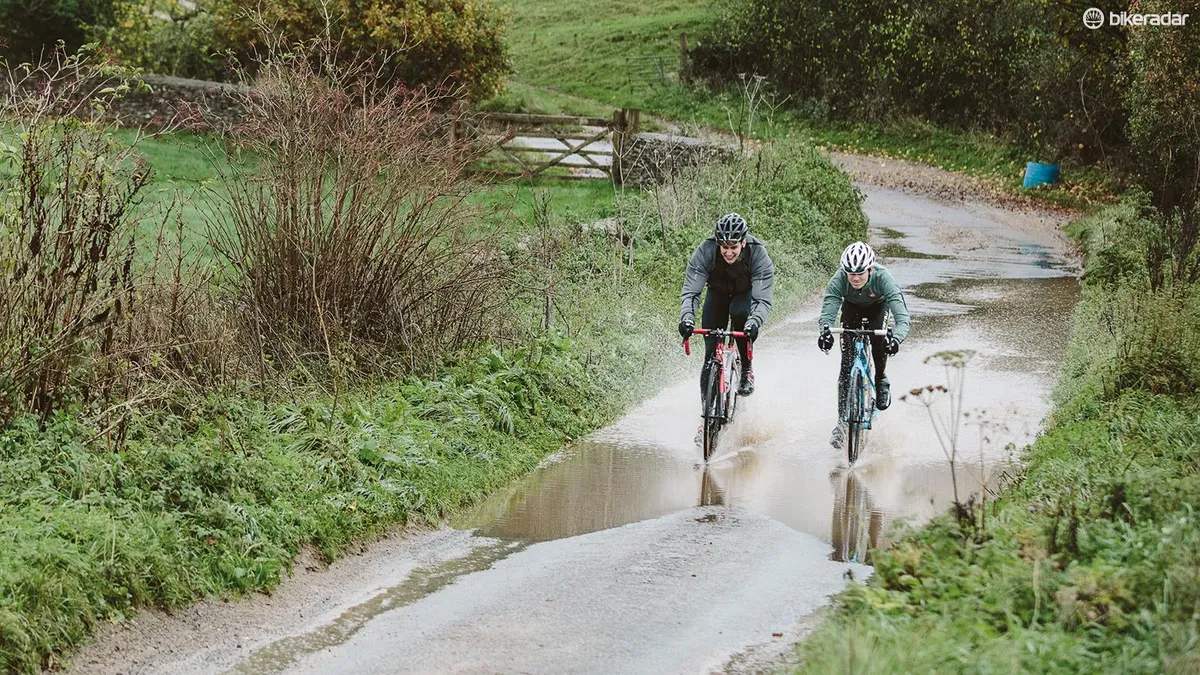
6. Social media
Brits spend an average of 80 minutes each day on social media, according to a 2016 survey of usage from the Global Web Index.
Turn that time into something more productive by logging into Zwift, Strava and MyFitness. “The social network aspect of systems like Zwift encourages you to perform better, which will benefit your road riding, ” explains Hunter Allen, of PeaksCoaching Group whose training programmes now feature on Zwift.
Changing carbohydrate intake so it’s periodised with specific training sessions will benefit your performance
Joining a social network of people who share a common goal can divert those wasted 80 minutes into a ‘group ride’ doing anything from Functional Threshold Power (FTP) tests and cadence drills to a race anywhere in the virtual world.
“It’s designed to augment a riders’ regular outdoor cycling — not replace it.” insists Allen. “There are no junk miles, no stop signs, traffic lights or wrong turns. If you want to do a workout, every pedal stroke in Zwift is part of that. The social interaction acts as a motivational tool encouraging you to ride and improve.”
7. Making excuses
Put these motivational spurs, from cycling coach Rob Wakefield, into action to ensure you never miss a day’s riding in 2017...
- Too cold: Have your kit and bike ready to go at all times and warm your kit up on a radiator. Set yourself a short circuit, but one that could extend easily once you’re outdoors. Getting over that initial 10 minutes is key, once you’re through it you’ll find you’ll stay on board.
- Too wet: Wet roads are worse when you’re going fast or descending, so instead use wet weather as an opportunity to focus on slower but essential skills or techniques such as over-geared hill climbs.
- Too busy: Draw up a plan of your week — meeting times, family time, sleep times and so on — and identify windows of opportunity for training. Build cycling into your commute and if you can’t do the full journey try cycling part of the way and either locking the bike up at a train station or leaving it with a friend or relative.
8. Bad carbs
Sugar’s ability to be more addictive than cocaine, thanks to it having a similar effect on the brain’s pleasure centres, doesn’t help cyclists with half an eye on endurance stamina or weight management.
“Changing carbohydrate intake so it’s periodised with specific training sessions will benefit your performance,” says Marc Fell, Team Sky nutritionist.
“On easy, general rides you don’t need as much carbohydrate before or during and could perhaps try these rides in a fasted state to promote adaptation and body composition. Only when it comes to rides that involve high-intensity efforts do carbs become king and it is important to have them before and during to support the high-intensity cycling.”
9. Smoking
It’s estimated that 19 percent of men still smoke cigarettes according to Public Health England, but kicking even a ‘social smoker’ habit can make you a better rider as those who do quit record up to 15 percent better scores in lung function tests just eight weeks after they stubbed out their last cigarette.
Dr Andy McEwen, director of the National Centre for Smoking Cessation and Training (NCSCT), suggests you:
- Get on your bike: A study in the journal Addiction reports that small doses of exercise can help combat withdrawal symptoms related to smoking cessation. Ride to your local stop smoking service for tips on which medication will be best for you. A safe quit medication can double your chances of quitting when compared with going ‘cold turkey’.
- Change hands: Think about the times when you used to smoke (for example at coffee stops, after a long ride, during work breaks) and revise your habits. Some smokers find that by forming a new, clean habit — such as going for a post-ride stroll — they overcome the craving to smoke.
- Roll-up rewards: Pick an item of cycling gear you’re craving — a new jersey, some new components — and work out how many packs of cigarettes it would ‘cost’. Pin a picture of it to your desk and use the lure of the lucre as a motivation not to smoke.
10. Post-ride muscle aches
“After a workout, it’s likely that your muscles will feel sore due in part to micro-damage,” explains Toby Garbett. “The subsequent healing leads to muscle growth, but to prevent constant aching make a resolution to do muscle-focused ride drills.”
Begin every session by building up slowly — with a dynamic warm-up instead of static stretches — then finish with a cool down, reducing the demands on the muscles but maintaining the motion as your body temperature reduces.
Buy into muscle-nourishing recovery food and plenty of fluids. Continue to take on water for the rest of the day and throughout the next day to flush the body. Research in the Journal of Athletic Training links dehydration with a higher risk of DOMS (Delayed Onset Muscle Soreness).
Use a pain relief cold spray to cool any muscle strains like a hamstring pull and reduce inflammation. Then use a warming product as the affected area recovers (around 72 hours later) to increase blood flow, providing oxygen and nutrients to aid the healing process.
11. Junk miles
“Many cyclists fall into the trap of thinking more miles means better or that it’s not worth the ride if you haven’t totally hammered it at some point,” says sports scientist Professor Greg Whyte OBE.
“If you set out to do a steady five-to-six hours as part of your training and stamina work, then smash through the last few miles at high intensity, you’re not sticking to the brief.
“Make each ride count by setting down what your intentions are, give it a purpose and aim to account for every click — be it intervals or tempo or a low-intensity recovery session or a steady endurance session set in a specific heart rate zone. Have a training plan that plots improvement and use a measure — a heart rate monitor or power meter — to quantify your rides. Do the same on group rides so that you’re ticking your own boxes during the ride or by doing your own work around it.”
12. Taking the car
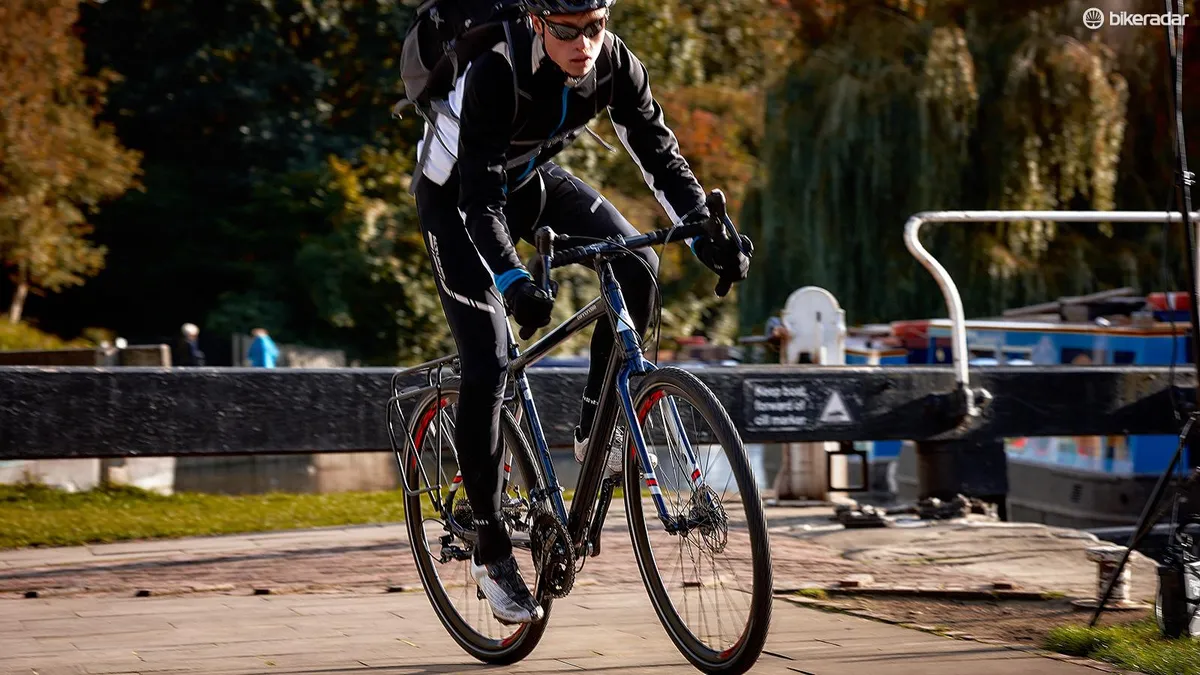
Sustrans figures show that for all the short journeys made by car 11 percent are under a mile, 29 percent are between one and two miles, and the remaining 60 percent are between two and five miles. Switching to two wheels for short journeys is a no brainer, while doing it for part or all of a daily commute is a positive performance enhancement.
Research from the CTC (UK national cycling charity) health briefing found the average person loses 13lb within the first year of cycling to work. To turn the resolution into a full commitment, cyclist and manager of Formby Cycles, Phil Harvey, suggests you sign up to a Cycle To Work scheme (if they're offered in your region).
Find out if your company is registered with a scheme. If it isn’t, then point out that in the UK it can save up to 13.8 percent on National Insurance contributions.
Tell your company you want a bike (up to the value of £1,000), which it will buy at a discount and you will reimburse it over the next 12 months through your salary. You will have an allowance of up to £1,000 to spend on a bike and accessories and could save up to 42 percent on purchase prices.
At the end of the period you can buy the bike outright at a fraction of its original value. (HMRC defines that value as being 18 percent of the purchase price for bikes under £500 and 25 percent of the cost for bikes over £500).
Cycling to work should account for 50 percent of all your bike-riding miles, but how you spend the other 50 percent of your time is up to you. To find out more go to cyclescheme.co.uk.
13. Other ideas
Resolutions don’t have to be about quitting or cutting down, they could see you take new things up…
Do more cycling for charity
Donating time and effort for charity can be a win-win for cyclists. “It gives you a tangible goal to train for and motivation to get out and ride,” says coach Rob Wakefield. Checkout charities like World Bicycle Relief or the British Heart Foundation for their nearest rides to you or contact a charity that’s closest to your heart.
“To generate more funds set up online donation and social media pages,” says Lucy Garner, pro rider and ambassador for children’s charity Dreams Come True. “If you sign up early for some events you may avoid higher registration fees.”
Ride a ‘new’ bike
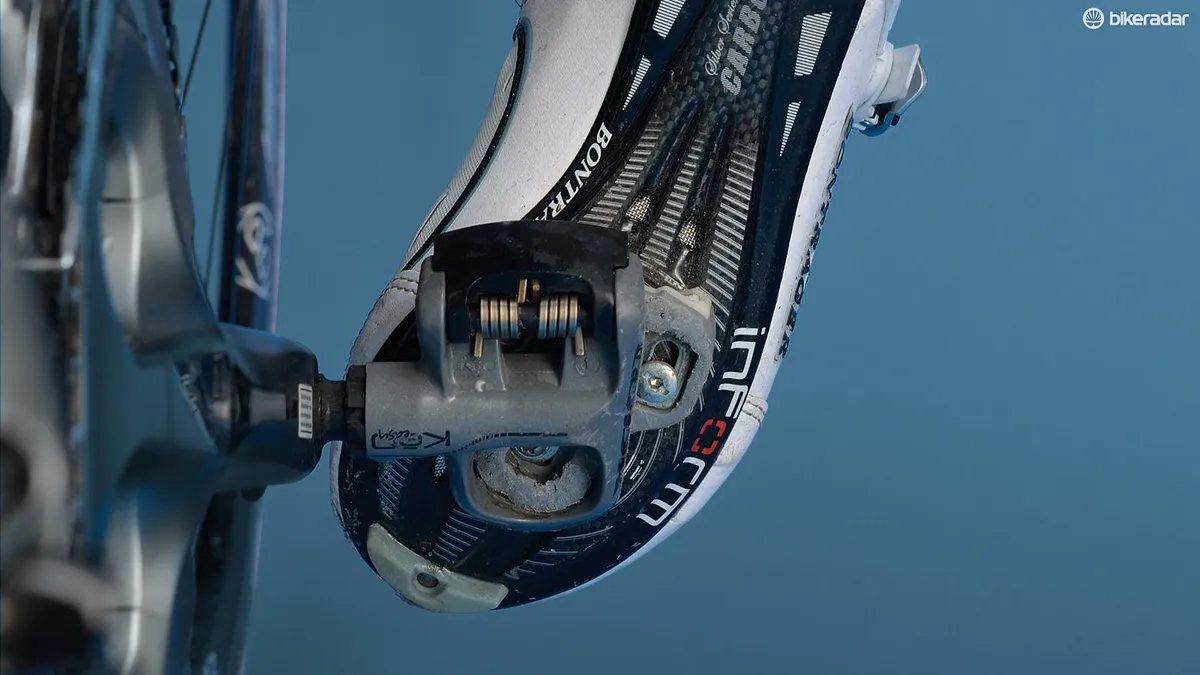
“If you’ve bought a new bike or are looking to make in-roads into your performance with the one you’ve got, get someone who knows about bike structure, anatomy and sports injury to take a look at your set up,” suggests Greg Whyte.
A good fitter should take you through all your contact points, optimising your reach and spotting common issues like cleat position. “Cleats are often fixed to the shoe by a shop or rider, with little or no thought to the positioning,” warns Richard Salisbury. “This can place undue stress on feet, ankles, knees and/or hips and result in injury. If you change shoe model, get a re-fit too.”
Also using the saddle to adjust reach is a no-no. “The saddle should always be adjusted for optimising movement of and minimising stress on knees, hip joints and pelvic position. Don’t try to adjust reach or arm position by pushing a saddle forward or back, do this with the stem and bar position once the saddle position is perfected.”
If you follow our advice and see significant changes to your body, consider another trip to the experts. “If you’ve experienced weight loss, injury or improvements in flexibility, or you’ve undergone a big change in mileage, then you should book a re-fit,” says Salisbury.
